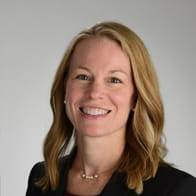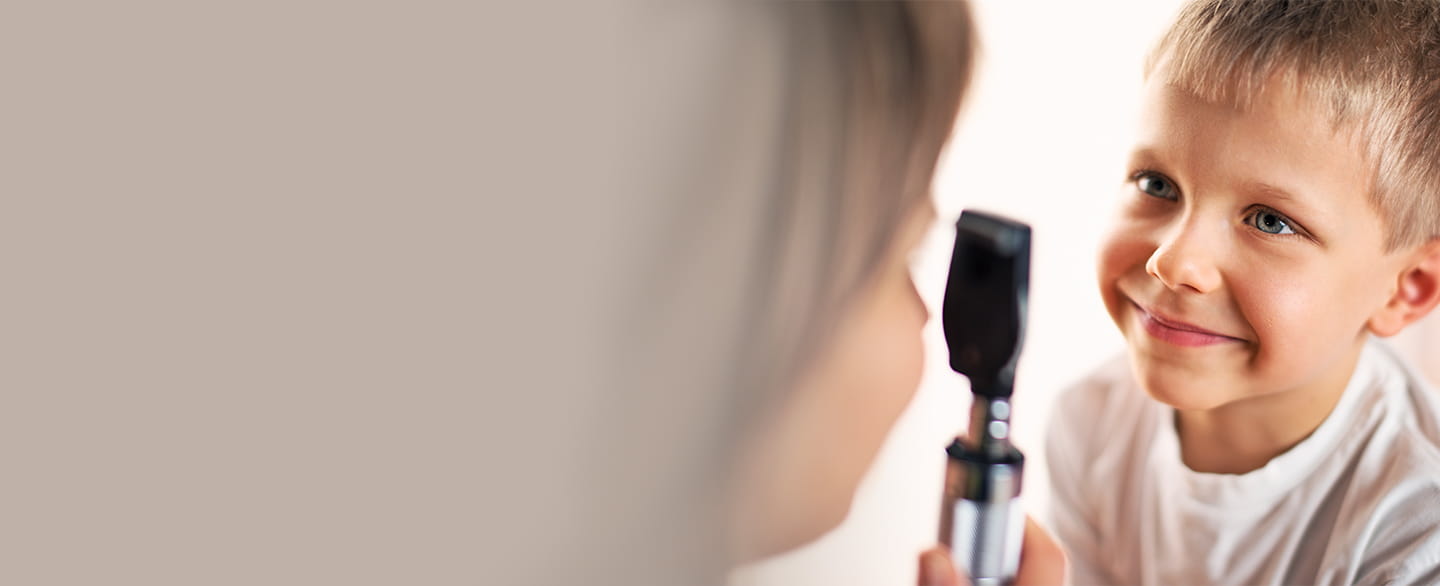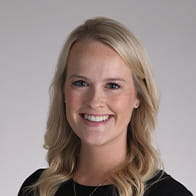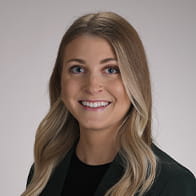
Pediatric Eye Care

The University of Kansas Health System offers comprehensive pediatric eye care for patients from birth to 21 years old. Our pediatric eye care specialists provide diagnosis, treatment and care collaboration for patients with all sorts of eye conditions.
About pediatric eye care
Pediatric eye care is more than just eye care for infants, children and young adults. Our pediatric eye specialists work with your child as they grow and develop, and along the way help recognize any changes that impact the health and development of your child's vision.
Our expertise includes surgical and clinical management of complex eye conditions for children from birth to 21 years old, including:
- Amblyopia, commonly referred to as lazy eye
- Cataracts
- Chalazion, a swollen bump on the eyelid sometimes called a stye
- Eye muscle disorders
- Lacrimal system disorders, including nasolacrimal duct obstructions and other conditions
- Pediatric strabismus, in which both eyes do not line up in the same direction
- Retina and vitreous diseases, which affect the blood vessels in the eyes of children born prematurely
The health system is part of an academic medical center, which means you have access to the latest and most comprehensive diagnostic and treatment options and a continuous network of care, and access to specialists at convenient locations in the Kansas City metro area.
We offer a variety of appointment types. Learn more or call 913-588-1227 to schedule now.
Our pediatric eye care facilities
Comprehensive pediatric eye care is offered at the Eye Center in Prairie Village, Kansas. Select visit types are offered at 2000 Olathe Blvd., Miller Building, Suite 1011, in Kansas City, Kansas, during hospital stays and part of interdisciplinary neonatal medical home visits.
A national leader in eye and vision health for more than 100 years, our Eye Center provides the full spectrum of eye care services, including routine vision exams, surgical procedures for complex eye conditions and an on-site optical shop.
Pediatric ophthalmology, optometry and eye care services
Starting with newborn screenings following delivery, our team of pediatric ophthalmologists, optometrists, orthoptists and technicians is here to support your accurate diagnosis and treatment plan, which may include outpatient or surgical treatment. Your pediatrician, family medicine doctor, optometrist or even your child's school may recommend you see a pediatric eye specialist due to a failed vision screening, retinal conditions, tumors, cataract surgery, vision care, corneal disorders, and scarring from infection or other reasons.
Here's how we were able to help one patient who was diagnosed with amblyopia.
Jeanene Kiesling:
Jenni Prochnow had no idea her little boy was having trouble with his vision, but a routine visit to the doctor was an eye opener for the whole family. Hank had a significant problem, it was something common and simple to fix but it had gone undetected. It could have caused bigger complications later in life, even blindness.
Hank Prochnow:
It’s a watering can!
Jeanene Kiesling:
Four year old Hank Prochnow loves to have a good time.
Jenni Prochnow:
H – A – and then where’s your N?
Hank Prochnow:
My N, right here.
Jeanene Kiesling:
From spelling with his magnetic letters –
Hank Prochnow:
This is Hank. This is a tiny spidey.
Jeanene Kiesling:
To playing with his action figures.
Hank Prochnow:
Green Goblin.
Jeanene Kiesling:
To look at Hank, you would never know that anything was ever wrong. When his mom Jenni took Hank to his 3 year old wellness check, she was stunned when his pediatrician diagnosed Hank with Amblyopia, more commonly known as a lazy eye. She’d never noticed anything different about his left eye until that moment.
Jenni Prochnow:
I didn’t think it was significant enough or anything, but when we went there they had this little iPad that they used. They shut the lights off, and that’s when it showed up.
Jeanene Kiesling:
Doctors say 2-5% of children are affected by amblyopia, it is the most common cause of vision loss and impairment in children. Hank’s pediatrician immediately referred the family to the pediatric eye care specialists at The University of Kansas Health System.
Jenni Prochnow:
We took it serious and did the patching, got him glasses, and he wears his glasses really, really well which is a big help.
Jeanene Kiesling:
With each checkup, Hank’s eyes are improving, and the hope is by the time Hank is 9, he will no longer need glasses. Jenni is grateful Hank was diagnosed early, even more grateful to the team that treated her little boy here at the Health System.
Jenni Prochnow:
The experience has been wonderful. The nurses are all great, they’re very patient with Hank.
Jeanene Kiesling:
As for Hank, it’s full steam ahead, and he’s not looking back.
Frequently asked questions
The following related specialties are also available for patients:
Why choose us for pediatric eye care
The University of Kansas Hospital has been named the No. 1 hospital in Kansas and in Kansas City by U.S. News & World Report since the inception of these awards. The University of Kansas Health System is also part of an academic medical center, which allows us to provide complex care with access to the latest research and treatment options. You can trust our specialists with your family's eye care.
We accept most major insurance plans, including Kansas Medicaid. Referrals are not required to receive appointments but are welcome.



Tori Rausch, CO
Certified orthoptist
Location
-
 1. Eye Care and Specialty Surgery
1. Eye Care and Specialty Surgery- 7400 State Line Road
- Suites 100, 208 and 212
- Prairie Village, KS 66208
Office Contact:




